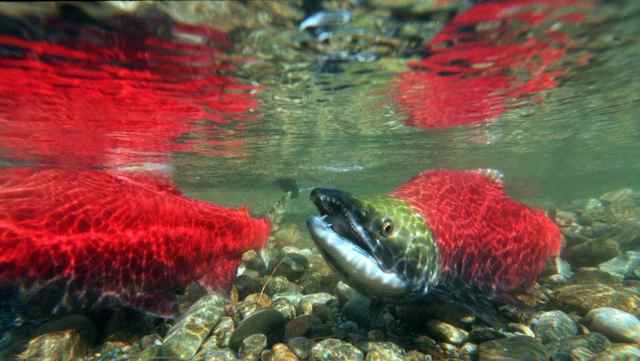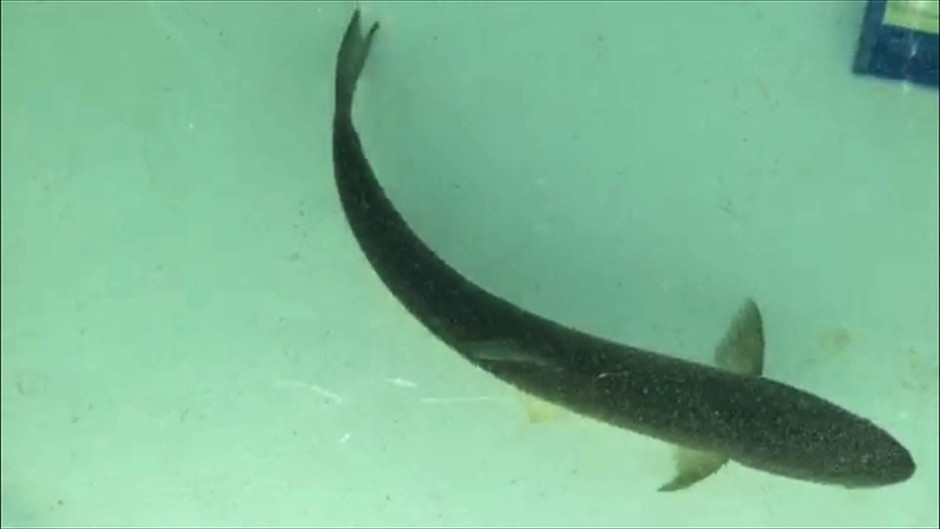forum
library
tutorial
contact

Managing Columbia River Water Resources
In Hot, Dry Year is Balancing Act
by Laura Berg
NW Fishletter, August 11, 2015
|
the film forum library tutorial contact |

|
Managing Columbia River Water Resources
by Laura Berg
|
"BPA has thoroughly prepared to meet load during the dry conditions that are
expected to persist through September," said Tony Norris, BPA operations planner.
 Columbia Basin storage dams have augmented flows on the Columbia River hydro system to the tune of about 40,000 cfs this year to generate power and help migrating fish.
Columbia Basin storage dams have augmented flows on the Columbia River hydro system to the tune of about 40,000 cfs this year to generate power and help migrating fish.
The augmentation stems from dry-year operations triggered by below-normal snowpack, early snowmelt and runoff, and hot weather.
Dry-year operations kicked in when the Northwest River Forecast Center predicted runoff volume through August at The Dalles Dam would be less than 72.2 million acre-feet, or less than 82 percent of average. The May forecast for the period was 71 percent of average.
About 8.7 MAF is projected to be released through September, when the special operations end. Canadian dams will have contributed an estimated 5.7 MAF of stored water.
Water from U.S. dams will continue to be drafted from storage reservoirs at Dworshak, Hungry Horse, Libby, Albeni Falls and Grand Coulee through September, reported Michael Coffey of the U.S. Army Corps of Engineers. These releases will augment flow and help moderate water temperatures in the lower Snake and Columbia rivers.
As specified in the BiOp, Libby and Hungry Horse reservoirs are scheduled to draft the maximum 20 feet below full pool by the end of September.
Brownlee Dam, which is operated by Idaho Power, is also releasing cooler water than the dam is taking in because its large reservoir remains cooler than its inflows, said NOAA Fisheries spokesman Michael Milstein.
"Balancing water use in a year like this is always a challenge," he said. The dam operators and fish managers who sit on the Technical Management Team TMT) recommend "how best to use the limited water resources for fish."
Dam operators have maintained BiOp spill levels for juvenile fish migrants at Columbia and Snake river projects during the low-river conditions. The exception was at Little Goose Dam, where spill was curtailed in an effort to encourage Snake River adult sockeye to move through the fish ladder.
Despite the efforts of dam operators and fish managers, the convergence of early August-like weather in June and July was disastrous for Columbia and Snake river sockeye returns.
About 510,000 sockeye passed Bonneville Dam, but not quite 300,000 passed Priest Rapids heading for upper Columbia River basins. That's almost 200,000 unaccounted-for sockeye (about 40,000 were caught during fisheries.)
For Snake River sockeye the news is worse. As of Aug. 4, only about 380 sockeye had passed Lower Granite Dam, the last on the lower Snake River. NOAA Fisheries estimated that 80 percent of the Snake River sockeye were unaccounted for, although most have probably perished, the agency said. A few more may make it back to the Sawtooth Basin to spawn before the end of September.
 For those sockeye migrating as far as Lower Granite, the Idaho Department of Fish and Game was trapping and trucking them to Eagle Hatchery in central Idaho. The fish agency suspended its daily effort on Aug. 5, but asked NOAA Fisheries for permission to collect and transport any sockeye reported at Lower Granite during other fish-related activities. NOAA's hydropower branch manager, Ritchie Graves, said his agency was likely to grant permission.
For those sockeye migrating as far as Lower Granite, the Idaho Department of Fish and Game was trapping and trucking them to Eagle Hatchery in central Idaho. The fish agency suspended its daily effort on Aug. 5, but asked NOAA Fisheries for permission to collect and transport any sockeye reported at Lower Granite during other fish-related activities. NOAA's hydropower branch manager, Ritchie Graves, said his agency was likely to grant permission.
Heading upstream through the Columbia River system in September and beyond are adult fall Chinook and steelhead. Historically, fall Chinook and steelhead have an easier time should warm water temperatures persist, said Graves.
More than 900,000 fall Chinook are projected to return to the Columbia River. Steelhead runs also look decent, with about 300,000 fish expected to cross Bonneville Dam. Upriver coho, which are among the last fish to start their annual upstream migration, are expected to total about 190,000 fish.
River conditions typically start improving in August as daylight hours wane and water and air temperatures decrease.
Nonetheless, Graves said, "TMT is mindful to reserve water into early September so we're ready for a hot snap should it occur."
In fact, reservoir drafting will start tapering off in August, and by the end of September, reservoirs will be releasing minimum flow. Releases from U.S. storage are projected to total about 3.2 MAF this year.
Even with these large draws from storage reservoirs, BPA is meeting regional energy needs and doesn't anticipate any problems continuing to do so. "BPA has thoroughly prepared to meet load during the dry conditions that are expected to persist through September," said Tony Norris, BPA operations planner.
Water-supply forecasts through Dec. 1 relative to average levels are 88 percent at The Dalles, 95 percent at Grand Coulee and 77 percent at Lower Granite.
What happens beyond December in 2016?
Will precipitation, particularly in the form of snow, allow the reservoirs to refill this fall and winter? Or, as Jim Ruff, Northwest Power and Conservation Council's manager of mainstem passage and river operations, asked: "Will the system be stressed more next year if we get similar winter conditions again in 2016? We do have another El Nino forecast for next year," he noted.
Responding to questions about 2016, BPA said, "Our long-range forecasts are business sensitive."
Related Pages:
Sockeye Arrives at Stanley Despite Warm Water by Associated Press, Teton Valley News, 7/29/15
Salmon Dying by the Thousands in Hot U.S. Rivers by Ted Ranosa, Tech Times, 7/29/15
First Sockeye of Year Returns to Redfish Creek Despite Hot Rivers by Rocky Barker, Idaho Statesman, 7/28/15
Why Are Thousands of Migratory Salmon Dying Before They Can Spawn? by Courtney Sherwood, Christian Science Monitor, 7/27/15
Biologists Bring Sockeye into Idaho on Trucks to Get Them Out of Hot Water by Rocky Barker, Idaho Statesman, 7/17/15
Sockeye Salmon Suffer Infections in Warm Columbia River System by Rich Landers, Spokesman-Review, 7/17/15
Half of Columbia River Sockeye Salmon Dying Due to Hot Water by Associated Press, The Oregonian, 7/18/15
learn more on topics covered in the film
see the video
read the script
learn the songs
discussion forum
